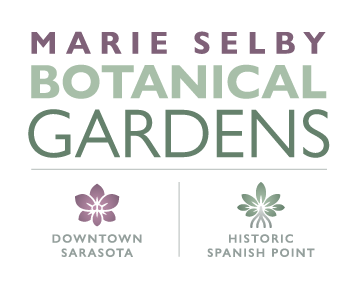The southwest coast of Florida is a major pit stop for migratory birds since from here, the distance across the Gulf of Mexico to the Yucatán is the shortest route (as the bird flies). Unfortunately, it is now also one of the most developed areas of the state and migrating birds are harder pressed every year to find significant food and cover to build up the energy reserves needed before their perilous journey across the Gulf. According to a recent study, North America has lost nearly 30% of its avifaunal abundance since 1970 (Rosenberg et al. 2019). That is a staggering 30 billion birds, or 1 in 4 gone forever; and for many threatened species, their numbers continue to decline at an alarming rate. In the face of catastrophic climate change and the ongoing destruction of the natural environment, our feathered friends need our help now more than ever. While we, as individuals, may not be able to stop the bulldozers or single-handedly end humanity’s destructive addiction to fossil fuels, there are some things we can do to help, beginning right in our own backyards.
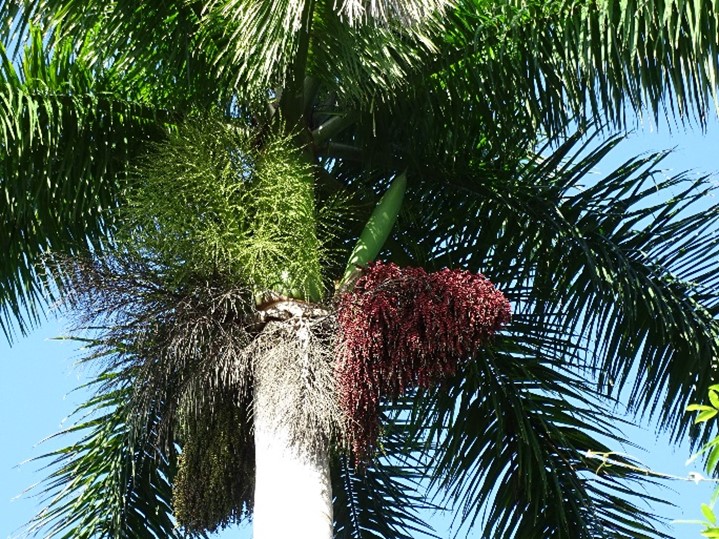
One major step the homeowner can take is to keep all pet cats indoors, since they represent a very significant threat to bird life, with an estimated 1-4 billion birds falling prey to free-roaming domestic cats yearly in the United States alone (Loss, et al. 2012). Another thing the homeowner or business owner can do is reduce or eliminate the use of chemical pesticides which are known to directly and indirectly harm both birds and the insect life many depend on. According to one very conservative estimate, nearly 1 billion birds in the United States are directly exposed each year to pesticides, and 10% of these birds die as a result (Williams 1997). A final helpful thing an individual can do is add native plants to their yards or business grounds. Native trees, shrubs, and wildflowers provide essential cover and food in the form of berries, seeds, or insects for both resident birds and migrants passing through in the fall and spring. Because they are adapted to our regional soils and climate, they also require less fertilizer and water than the exotics that are so often planted. Using native plants instead of exotics in landscaping is also a boon for the Gulf, since nutrient runoff from fertilizers and irrigation systems has been linked to the increasing frequency and severity of red tide blooms on our coast (Brand et al. 2007).
Berry-producing trees and shrubs are especially popular for migrating birds because the berries are a quick and excellent source of energy to build up much-needed fuel reserves, and their bright colors mean the birds don’t have to spend much time looking for them (as they do insects or seeds). In addition, because native trees and shrubs have co-evolved with the passing autumn and spring bird migrations, many of them produce berries that ripen just in time to be eaten by the influx of migrants, to ensure maximum dispersal of their seeds. The birds in turn, get the energy they need for their journey to and from the Neotropics. Some excellent bird-friendly, berry-producing native trees and shrubs for southwest Florida yards include hollies (Ilex spp.), red cedar (Juniperus virginiana var. silicicola), beautyberry (Callicarpa americana), stoppers (Eugenia spp.), Simpson’s stopper (Myrcianthes fragrans), firebush (Hamelia patens var. patens), myrsine (Myrsine cubana), rougeplant (Rivina humilis), Florida privet (Forestiera segregata), lancewood (Damburneya coriacea), marlberry (Ardisia escallonoides), snowberry (Chiococca alba), white indigoberry (Randia aculeata), gumbo limbo (Bursera simarouba), myrtle-of-the-river (Calyptranthes zuzygium), red and swamp bay (Persea spp.), swamp dogwood (Cornus foemina), wax myrtle (Morella cerifera), cocoplum (Chrysobalanus icaco), buttonsage (Lantana involucrata), wild coffee (Psychotria spp.), Jamaican caper (Quadrella jamaicensis), Carolina laurel-cherry (Prunus caroliniana), Walter’s viburnum (Viburnum obovatum), and the shrubby bullies (Sideroxylon spp.) as well as the majestic shade tree, false mastic (Sideroxylon foetidissimum). Even many native palms produce fruit relished by the birds, including cabbage palms (Sabal palmetto), dwarf palmetto (Sabal minor), thatch palm (Thrinax radiata), Everglades palm (Acoelorraphe wrightii) and Florida royal palms (Roystonea regia).
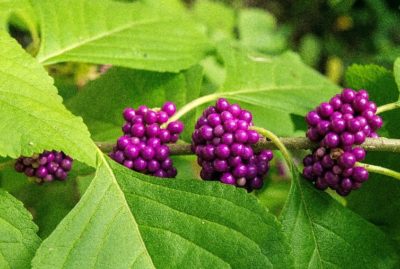
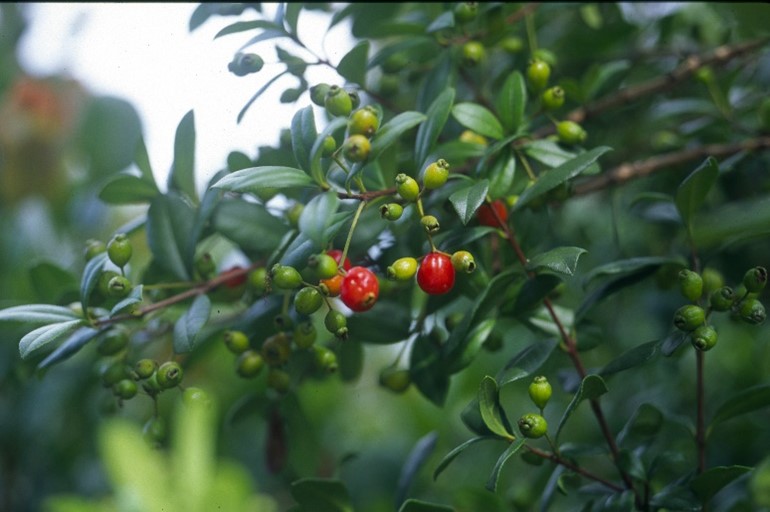
Shrubs like the showy American beautyberry (left) and Simpson’s stopper (right) produce fruit in in the autumn that are relished by migrating songbirds (Photos by Aaron Fink & Bruce Holst)
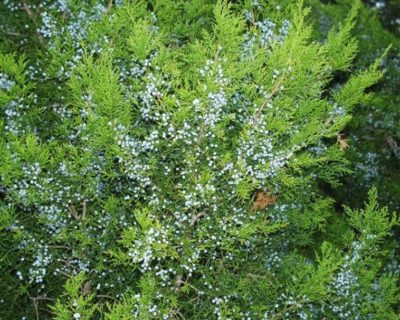
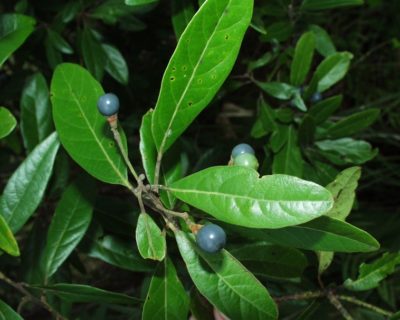
Good autumn-fruiting trees for songbirds include red cedar (left) and red bay (right), both of which produce beautiful blue berries (Photos by Bruce Holst).
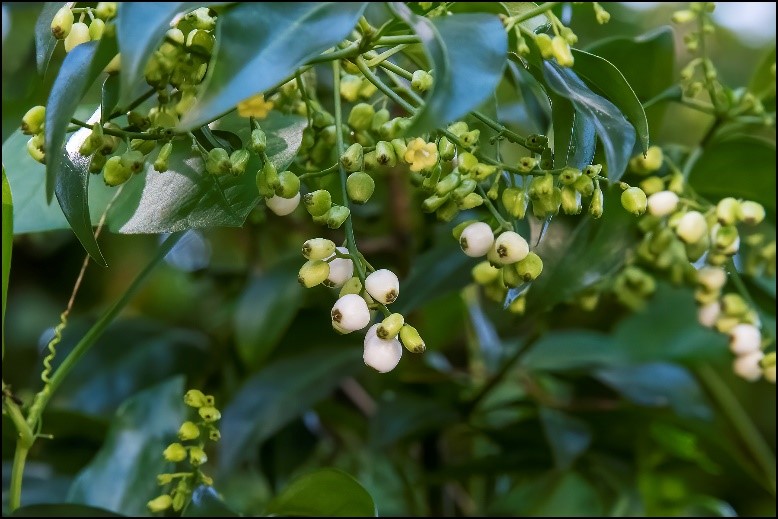
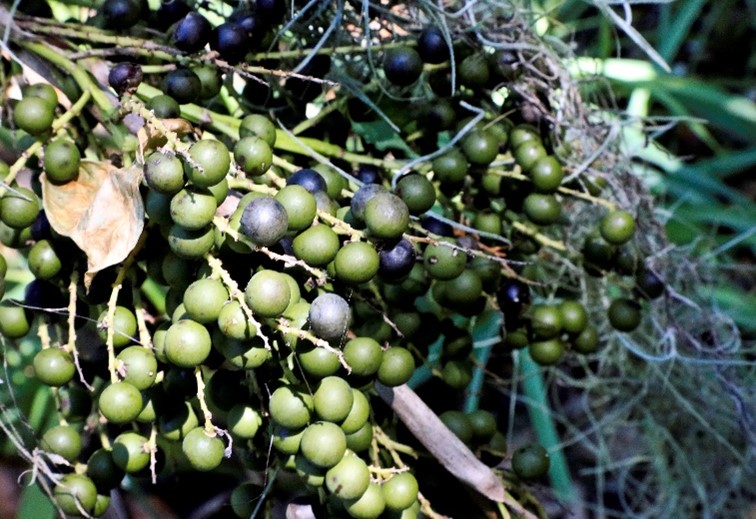
White fruits of snowberry at our Historic Spanish Point campus (Photo by Wade Collier) and the large blue berries of dwarf palmetto in the native garden at our Downtown Sarasota campus (Photo by Sandra Robinson).
Come see examples of many of these now in fruit at our Downtown Sarasota and Historic Spanish Point campuses during the autumn bird migration that begins in September. See firsthand the kinds of beautiful native berry plants you can add to your yard for the birds. Our feathered friends will reward you with song, color, beauty and movement in your garden.
References
Brand, Larry E, and Angela Compton. “Long-term increase in Karenia brevis abundance along the Southwest Florida Coast.” Harmful algae vol. 6,2 (2007): 232-252. doi:10.1016/j.hal.2006.08.005
Donaldson D, Kiely T, Grube A. Pesticide’s industry sales and usage 1998-1999 market estimates. US Environmental Protection Agency; Washington (DC): Report No. EPA-733-R-02-OOI. Available from: http: //www.epa.gov/oppbead/ pesticides/99 pestsales/market-estimates.pdf.
Loss S.R. et al. 2012. The impact of free-ranging domestic cats on wildlife of the United States. Nature Communications 4:1396 doi: 10.1038/ncomms2380. Accessed 8/16/2021 at: https://abcbirds.org/wp-content/uploads/2015/09/Loss_et_al._2013-Impacts_Outdoor_Cats.pdf
Rosenberg, K. V. et al. 2019. Decline of the North American Avifauna. Science 365(6461). doi: 10.1126/science.aaw1313. Accessed 8/16/2021 at: https://www.3billionbirds.org/findings.
Williams, T. (1997) Silent scourge. Audubon [January–February] 28–35.
Further reading
BirdLife international : http://datazone.birdlife.org/
National Audubon Society, Sarasota Chapter: https://www.sarasotaaudubon.org/
